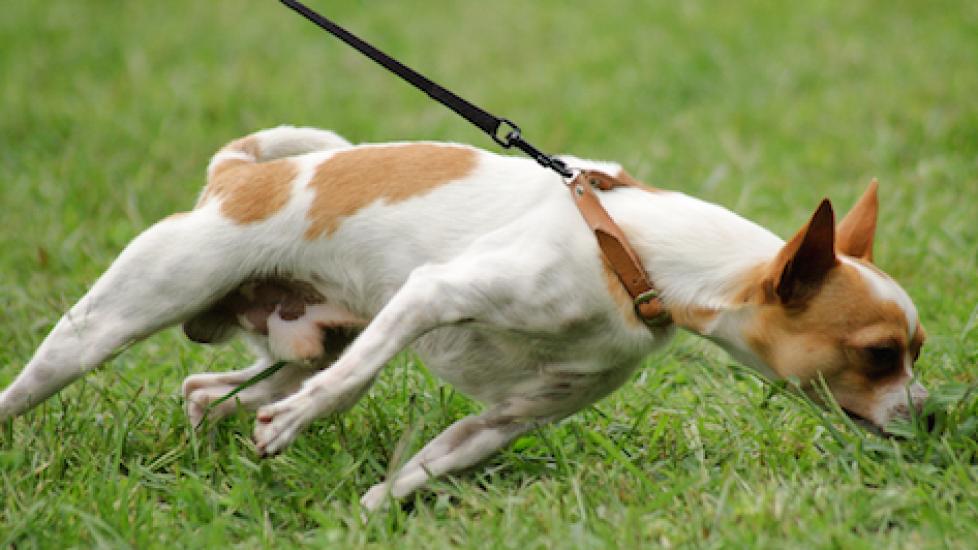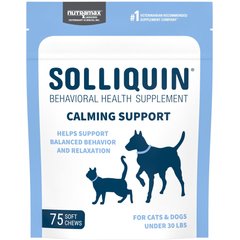How to Stop Your Dog From Pulling on the Leash
By Caitlin Ultimo
We all have that friend, relative, or rival who walks their dog with expert leash-wielding skills. They aren’t being pulled down the block, tied 'round trees, or tangled up with the friendly neighbor dog who’s also out for an afternoon stroll. I don’t know about you, but I silently envy the person and pet that can walk side-by-side without breaking a sweat.
And I have to admit, good leash walking skills are important for more than just showing off your pet-parent talents.
“From a relationship perspective,” explains Sarah Fraser, a certified professional dog trainer and co-founder of Instinct Behavior & Training in New York City, “if your dog is walking nicely on a leash, it likely means that your dog is paying more attention to you, making it easier for you to provide direction and guidance as needed along your walk.”
A leash-puller can also run the risk of accidentally breaking away from your grip, which can pose multiple dangers to your pet if he or she continues to run, not to mention the danger for yourself if you end up face-first on the sidewalk. Having proper leash manners minimizes the risk that you will be pulled over in a moment of overzealous leash yanking and will make the time more about walking and less about tug-of-war.
“Teaching your dog to walk nicely on a leash allows you to take her more places and for longer walks, because it’s more comfortable and enjoyable for the both of you,” Fraser says.
Tips for Better Walking Behavior
Whether your dog is big or small, here are six ways to improve your dog’s behavior on a leash:
Adjust your attitude.
First, ask yourself: “What would I like him or her to do instead?” Instead of teaching a dog to stop pulling, think of it as teaching your dog how to walk nicely beside you.
Remember it’s all about the rewards.
One of the easiest and most effective ways to start teaching a dog to walk properly on a dog leash is to reward the dog for paying attention to you and for being in the desired position (next to you or close to you) when out for a walk.
“As the dog learns that walking next to you is a pleasant, rewarding experience, she’ll spend less time pulling and more time walking nicely beside you,” says Fraser. Try using very special treats in the beginning, like small pieces of boiled chicken or roast beef, to really get your dog’s attention, she advises.
If you are worried about spoiling your pup's meals you can use pieces of dehydrated dog food or freeze-dried dog food from your pup's daily meals. That will help you to make sure you are not overfeeding your dog while also supplying them with tasty incentives for good behavior.
Play the “follow me” game.
Hold on to your leash and take several backward steps away from your dog. The backward movement is inviting, so your dog is likely to turn and follow you. Say “yes!” as your dog approaches you, then immediately reward him or her with a treat.
“The game helps your dog focus and move with you,” says Fraser. Then back away several steps in another direction. Once again, says “yes!” as your dog approaches and reward him or her with a treat. Repeat this pattern eight to 12 times, until your dog is actively pursuing you when you move away.
Practice on your regular walks.
Once you’ve started your stride, each time your dog looks up at you or walks next to you, says “yes!” and immediately reward him or her with a treat.
Reward often.
"Frequent rewards will help your dog figure out more quickly what behavior you’re looking for and make the learning process easier for her,” Fraser explains.
“The trick to making this work is using very special treats at first, and keeping your rate of reinforcement high, which just means that you are marking and rewarding often—maybe every 4-5 steps at first—for any and all ‘good’ leash behavior.”
Over time, you can thin out your rate of reinforcement, rewarding your dog less frequently throughout the course of the walk, Fraser adds.
Consider additional assistance.
“If your dog is already a practiced puller, consider purchasing a quality front clip harness to provide extra control on walks,” Fraser recommends. But if your dog already pulls hard with a no pull dog harness, consider working with a certified, positive reinforcement-based trainer.
Finally, remember that walking on a leash is a skill that takes time and practice for both the pet parent and dog, so celebrate incremental improvements and successes!
Did you know walks help your pet digest food? Find out more: Top 10 Health Benefits Walking Provides Your Pet
Learn more from PawCulture:
Csehak Szabolcs/via Shutterstock

